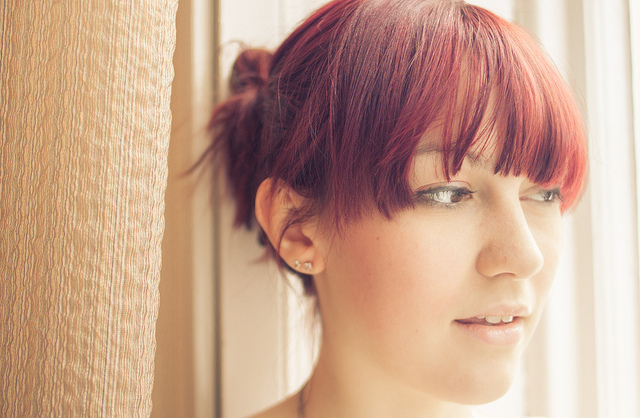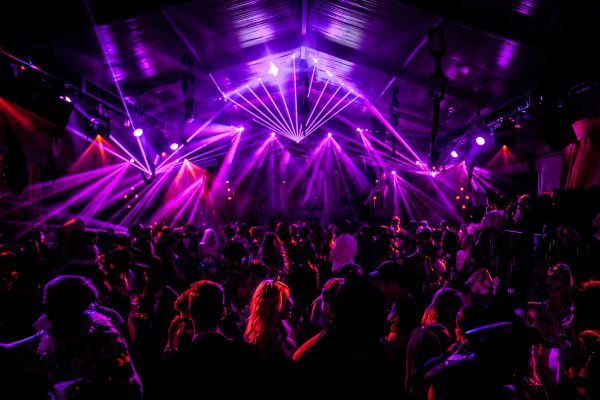Table Of Content

Consider your hair porosity too; high porosity hair may require more frequent glossing treatments to maintain color vibrancy between dye applications. Choosing a shade within three shades of your natural hair color is easier on fragile, color-treated strands that may need extra care between coloring sessions. To protect against damage from heat styling tools, use heat protection products such as Function Of Beauty’s custom haircare range, which is sulfate and paraben-free.
How Often Is It Safe to Color Your Hair?
Ultimately, permanent dye lets you change your look dramatically but requires more maintenance. Consult the pros to find your perfect permanent shade and a routine to keep your color poppin’ and your hair happy. As your hair grows, touching up the roots promptly will help maintain a consistent color appearance and extend the life of your dye job. Waiting for this duration allows your hair to recover, maintain its health, and minimize any potential damage caused by frequent dyeing.
How to care for your color treated hair
Demi-permanent dye deposits color, and it cannot lift hair color, Spearmen explains. But the peroxide is what allows it to penetrate your hair shaft, in contrast to semi-permanent dye, which essentially “sits” on top your cuticle. “A semi-permanent hair dye can be done every week, since it does not penetrate your hair,” Mitchell notes. That’s because semi-permanent dye uses gentler chemicals and runs a lower risk of damaging hair follicles. If your hair is robust and you’re using semi-permanent dye, you can probably use it a bit less often than every four weeks. A visit using semi or demi-permanent dye is much gentler on hair and leads to damage less often.

At-home permanent hair dye
And when you are ready to get back to heat styling, she says a heat protectant is a must; her recommendation is this leave-in treatment from Pravana. Thankfully, there are many protectants like this one out there that will not only shield your new color from hot tools but will also keep UV rays from penetrating your strands and altering your new color. Pineda points out that the additional wait time before your first shampoo can do favors for your scalp's health, too. The oils that your body naturally produces on the scalp will not only hydrate but also protect your hair, she tells us. For this reason, keeping up with a consistent routine of washing your hair every two to three days will only do favors for your hair color.
Avoiding Your Next Haircut? Don’t Make The Same Mistakes As Me - Brit + Co
Avoiding Your Next Haircut? Don’t Make The Same Mistakes As Me.
Posted: Fri, 26 Apr 2024 18:04:56 GMT [source]
The shorter the time between dyes, the more damage you are going to do to your hair. Dyed hair requires special color-safe shampoos and conditioners to keep your shade looking vibrant, not faded. “First, don’t over-cleanse—lathering once is sufficient—especially if you shampoo daily,” says Minardi.
Here’s How Often You Can Dye Your Hair, According to Professional Colorists - Well+Good
Here’s How Often You Can Dye Your Hair, According to Professional Colorists.
Posted: Mon, 25 Mar 2024 07:00:00 GMT [source]
Demi-permanent dye offers a duration of color that can last up to approximately 20 washes. It is categorized as a low-level peroxide dye and is typically recommended to be reapplied every six to eight weeks. This waiting period allows your hair to recover and gives the color pigments a chance to fade naturally, ensuring a more accurate assessment of your hair’s current shade. Doing so will also lower potential damage from excessive chemical processing. If you use a semi-permanent dyes or temporary dye, you can get away with coloring your hair more often because these types of dyes don’t penetrate the hair shaft as deeply as permanent dyes do.
Things to Consider When Dyeing Your Hair at Home
To keep your new color fresh, aim for touch-ups every 3 to 4 weeks if you wash your hair frequently. Limit the use of harsh chemical treatments like bleaching or perming, as they can weaken and fade the color. Incorporate deep conditioning treatments into your routine to keep your hair hydrated and healthy.
The golden rules of hair color
Professional-grade dyes often have better staying power compared to drugstore brands. How often to color hair will depend on factors such as your hair’s health, texture, and the desired level of lightness. It’s essential to consult with a professional hairstylist who can assess your hair’s condition and recommend the ideal timeline for your specific needs. If a sun-kissed hair color is what you’re after, then reach for this at-home hair color kit, which comes with a touch applicator. The non-drip creme (which helps protect hair as it colors) comes in a variety of shades so that you can easily find your best match.
How Often Can You Dye Your Hair if You’re Going Gray?
Staying away from water can give your newly dyed strands their best chance of remaining vibrant. "I recommend clients give their hair two to three days to let their new color truly set in," says Pineda. While washing your hair the next day doesn't necessarily do any harm to your hair or color, waiting it out may offer an added boost for longer hold. "It allows the hair cuticle more time to close and lock in those beautiful, newly added tones," adds Debski, who advises her clients to hold off from their first rinse for at least a full 24 hours.
Because these dyes aren’t as damaging, you can use them more frequently. While conventional hair dye works on all hair types, it can be too harsh for people with sensitive scalps and certain allergies. Carryl says that henna prevents any type of irritation or negative health side effects, and adds that it's an effective alternative for those looking for natural dyes. Carryl adds that another huge difference is that henna doesn't lift the natural hair color, but rather, it deposits onto the hair and colors it naturally. For instance, if you have a light blonde color, you'll have blatant red tones. If you're a brunette, on the other hand, your hair might have brown tones and red lowlights.
How often you decide to dye your hair depends on a few things, especially the kind of dye you’re using and how healthy your hair is at the start. The other issue with box dye is simply the uncertainty of the results. "Customers may be led to believe they will have the result pictured on the box," says Bode. If a redhead and a blonde grabbed the same box dye, they would have completely different results.
With something as expressive as hair color, the idea of permanence doesn't really align. Permanent hair color is, perhaps unsurprisingly, difficult to remove. "I personally only use permanent color when 100 percent grey coverage is needed [for] this very reason," says Rae. Hair color is more than just a matter of personal preference—it's chemistry. Dying our hair is shifting the interior and the exterior of our strands, so the way we treat them is key to color preservation, vibrancy, and health. It’s pivotal to prioritize the health of your strands when choosing how often to dye your hair.
However, it’s important to read the instructions before applying so you don’t end up with any stains. All of these processes involve lightening or “lifting” the hair. You can do this with bleach or high-lift tint, depending on your base hair color and desired outcome. Generally speaking, experts recommend anywhere around four to eight weeks between coloring, given that proper care and maintenance is taken to ensure hair is protected from damage.
And remember, even if you do end up coloring your hair more frequently than you’d like, there’s always the option of going back to your natural color. There are plenty of root touch up sprays or powder out there that can convincingly cover your roots until you’re ready to visit your hair stylist or hair professional. Once a week, smooth your colored locks with a deep conditioning treatment or hair mask to lock in moisture, keep your color lustre and keep dryness at bay.














